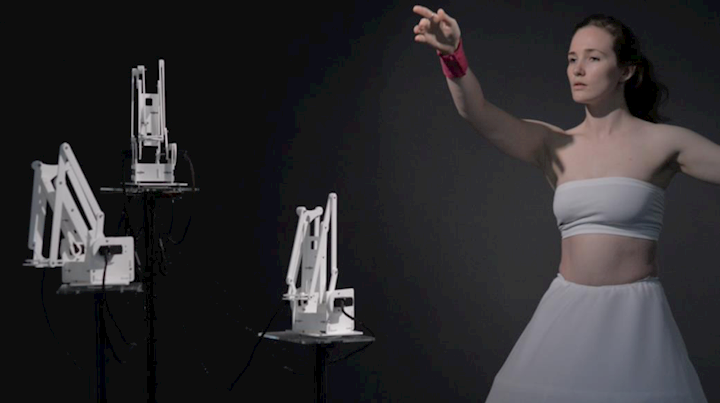The king stared at the figure in astonishment. It walked with rapid strides, moving its head up and down, so that anyone would have taken it for a live human being. The artificer touched its chin, and it began singing, perfectly in tune. He touched its hand, and it began posturing, keeping perfect time... As the performance was drawing to an end, the robot winked its eye and made advances to the ladies in attendance, whereupon the king became incensed and would have had Yen Shih executed on the spot had not the latter, in mortal fear, instantly taken the robot to pieces to let him see what it really was. And, indeed, it turned out to be only a construction of leather, wood, glue and lacquer, variously colored white, black, red and blue. Examining it closely, the king found all the internal organs complete—liver, gall, heart, lungs, spleen, kidneys, stomach and intestines; and over these again, muscles, bones and limbs with their joints, skin, teeth and hair, all of them artificial... The king tried the effect of taking away the heart, and found that the mouth could no longer speak; he took away the liver and the eyes could no longer see; he took away the kidneys and the legs lost their power of locomotion. The king was delighted.1— Yen Shih 'Mechanical Man'
When we see a dance performance, more often than not, we expect to see a dancing body. Probably a human dancing body. What if we were to challenge this by asking: To what extent can a non-human body be introduced into a live performance and still be considered a dancer? This is essentially a question of agency or more specifically, performative agency.
‘The Non-Human Dances’ is an ongoing research project that is comprised of a series of live performances that each feature, non-human dancers. The aim of this series is to examine the possibilities around working with a more fluid perception of the dancing body in live performance. It is much easier to afford performative agency to humanoid robots. We see in them something that we recognise and can relate to. However, moving away from the human shape into a non-anthropomorphic form allows the non-human dancers to have a movement vocabulary which is not accessible for the human dancer. With this, there comes an additional requirement for the creative process to include time to learn this new movement vocabulary. To experiment with range, style, speed and dynamics. To learn how to choreograph effectively for this new body. There is a broader scope of movement possibilities all dependent on build, structure, materials, electronics and algorithms.
Software development runs alongside of the choreographic process. Improvisation techniques are written into the code and a score is devised that both the non-human and human dancer can follow. Computer vision algorithms serve as the non-human dancers senses. The non-human dancer is aware of the human dancers presence in the space and responds to the human dancers movements in accordance with the written/coded score.
The first piece created for this series, ‘Dancers in White, Standing’ (2017) brings three robotic dancers together on stage with a human dancer. Constructed of plastic and metal, the robotic dancers have a physical structure and movement capabilities similar to that of an industrial robotic arm. All of the dancers, both human and non-human, follow the same improvisational score. They also all listen and respond to the music and most importantly they watch each other. The non-human dancers respond to the movements of the human dancer while in turn the human dancer responds to the movements of the non-human. A choreographic feedback loop.

Dancers in White Standing – 2017
The next and most current piece in the series is ‘Audrey’ (2018) (named after Audrey Munson). Audrey is a duet featuring a robotic dancer constructed of wood and paper. Strong motors combined with extreme height allow her to sway gently like a tree in the wind, capable of extreme tilts with a graceful recovery. The human dancer responds in real time to a video showing several short dance clips, mostly from the Postmodern era. The non–human dancer then in turn responds to the human dancer. This creates increasing levels of abstraction within the movement data. In the video the data is in its purest form, the improvising dancer manipulates that data and in turn the non–human manipulates it further. A choreographic game of Telephone.

Audrey – 2018
Dancers in White, Standing and Audrey, offer only an insight into the question of a non-human dancers performative agency. This research is ongoing with new possibilities and new non-human dancers needing to be made and explored before conclusions are possible. This research series does not aim to challenge the human nature of dance. Rather it explores the possibilities around a more fluid sense of the performing body. Creating a new space within live performances where non-human bodies are accepted.
1. The Shorter Science and Civilization in China by Joseph Needham andColin A. Ronan, page 92. back to text